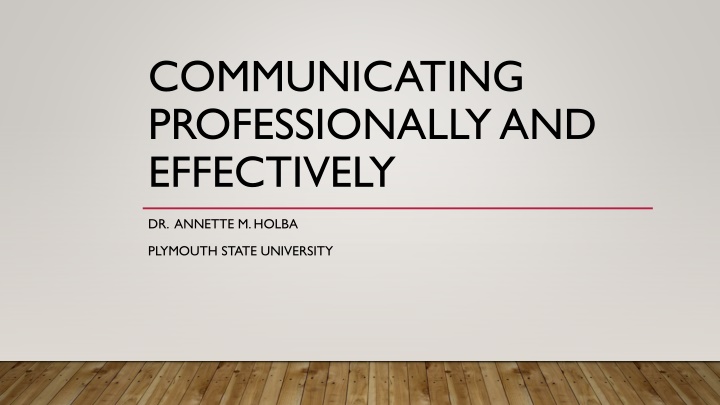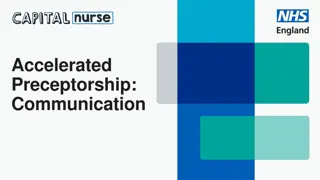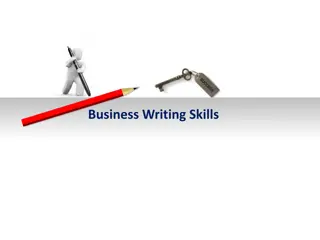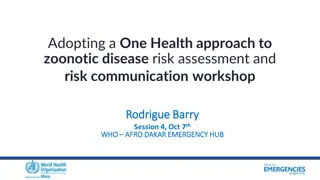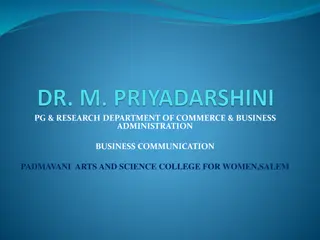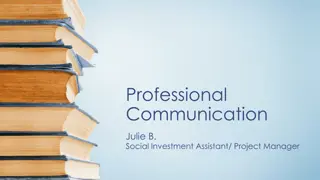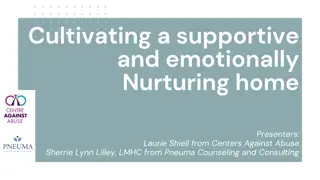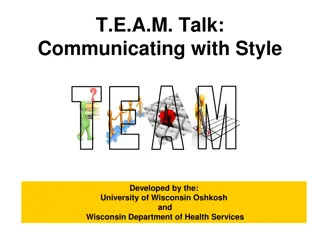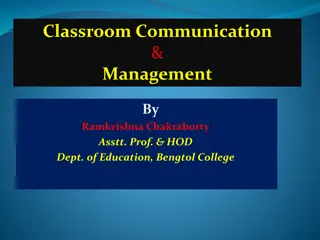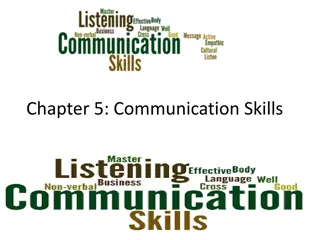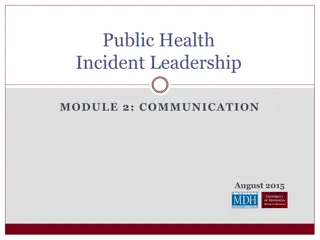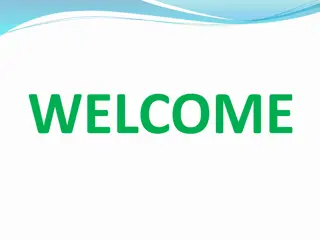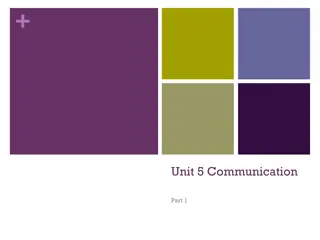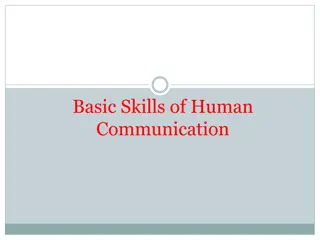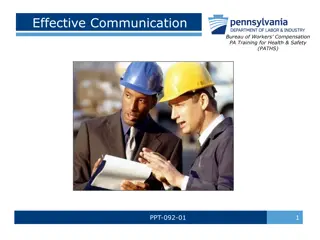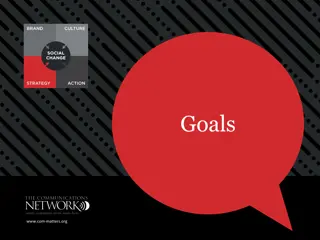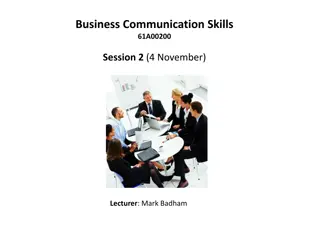Effective Professional Communication Strategies
Professional communication involves clear, concise, and respectful messaging essential for success in various settings. Explore supportive and defensive communication tactics to navigate challenges effectively. Learn how to enhance your brand through intentional, purposeful communication, both verbal and nonverbal.
Download Presentation

Please find below an Image/Link to download the presentation.
The content on the website is provided AS IS for your information and personal use only. It may not be sold, licensed, or shared on other websites without obtaining consent from the author.If you encounter any issues during the download, it is possible that the publisher has removed the file from their server.
You are allowed to download the files provided on this website for personal or commercial use, subject to the condition that they are used lawfully. All files are the property of their respective owners.
The content on the website is provided AS IS for your information and personal use only. It may not be sold, licensed, or shared on other websites without obtaining consent from the author.
E N D
Presentation Transcript
COMMUNICATING PROFESSIONALLY AND EFFECTIVELY DR. ANNETTE M. HOLBA PLYMOUTH STATE UNIVERSITY
WE WILL: Meet & Greet Professional Communication and Your Brand Effective Communication and Leveraging It for Success Supportive and Defensive Communication (in personal/professional settings) Verbal and Nonverbal Communication in the Job Search and Career Questions
LETS MEET Professor of Rhetoric in Communication & Media Studies at Plymouth State University First career as a County Detective in NJ assigned to Sex Crimes and Homicide Serve on Non-Profit Boards and provide professional communication training in healthcare organizations/professions Who are you and what are your interests?
PROFESSIONAL COMMUNICATION AND YOUR BRAND Professional Communication involves how we create messages and deliver them in professional settings/contexts. Communication is clear, concise, supportive (even if message is critical or negative), respectful, formal (not familiar), and appropriate to the particular industry. It is purposeful/intentional which requires a high level of preparedness and thoughtfulness. It also involves both verbal and nonverbal communication. Your Brand a brand is a particular identity of a person, place, or thing that initiates from a name, title, perception, event, symbol or icon, etc. Everything you do in the public domain impacts your brand and how people perceive you.
SUPPORTIVE AND DEFENSIVE COMMUNICATION TO MAKE SOMEONE DEFENSIVE Evaluation TO BE SUPPORTIVE OF OTHERS Description Problem-Orientation Control Spontaneity Strategy Empathy Neutrality Equality Superiority Provisionalism Certainty
Defensive Examples Evaluation Why did you do this? You always interrupt me Control I know how to handle this, so this is how it will be Strategy I do not believe you have the best interests of NH in mind, so how can you suggest this is the only solution? Neutrality I don t really care about that or Whatever it doesn t matter Superiority As Speaker of the house, I am telling you that you are out of time Certainty Your evidence is incorrect so how can your policy really address the matter? Supportive Examples Description The process took too long to hear everyone, and many people left Problem Orientation I think we have a problem, we need to think about how it can be addressed Spontaneity There are other issues to consider in conjunction with issue one, we should be open to all these possibilities Empathy We should find a solution that supports all of NH citizens Equality Let s all stay under 3 minutes to state our positions Provisionalism In my opinion, we can explore the issue from a different vantage point to see how others understand the matter?
EFFECTIVE COMMUNICATION AND LEVERAGING IT FOR SUCCESS What is your goal or reason for communicating? This involves knowing the situation and understanding your role. Know as much as you can about your audience who are you creating the message for? Understand when the stakes are high and be prepared to adapt message to the contexts. Be prepared. Make sure to provide reasons/evidence if you are calling for change. Select the best words/language that demonstrate you know the industry and you have current knowledge. Clear, concise, and appropriate language choices elevate your ethos and build trustworthiness.
VERBAL AND NONVERBAL COMMUNICATION FUNCTIONS OF VERBAL COMMUNICATION Instrumental and Regulatory Functions FUNCTIONS OF NONVERBAL COMMUNICATION Complementing Contradicting Interactional and Imaginative Functions Repeating Personal Functions Substituting Heuristic and Representational Functions Accenting Cultural Functions Regulating
CATEGORIES/TYPES OF NONVERBAL COMMUNICATION Haptics - touch Vocalics sounds/utterances that are not words Kinesics body movements/gestures Proxemics space in communication Chronemics time in communication Olfactics smell in communication Physical Appearance ornaments, clothing, hair, decorations
COMMUNICATION IN YOUR JOB SEARCH AND CAREER JOB SEARCH Read job descriptions closely CAREER Know the subfields in your desired industry? Be familiar with the specific language (jargon) used in the industry? Make sure to use language from the description in your cover letter/email/and supporting documents. When you interview, use language from the job ad and work on using the most effective language and nonverbal communication during interviews. What you do not know, look up! Listening, reading, interpreting is just as important as communicating. Use language to network effectively.
HOW TO APPLY THIS INFORMATION? ASK YOURSELF THESE QUESTIONS: Assess your own verbal communication effectiveness what do you need to improve? Assess your own nonverbal communication what do you like and not like about your nonverbal patterns? Listen to others/listen to self how can you be more open and inviting to others? Consider language choices (I/You/We) how can you switch form defensive to supportive language? Consider (check/review) the focus and structure of message how can you change communicative habits that do not provide for review, reflection, or a communicative pause? Nonverbal behaviors communicate MORE/OTHER message(s) how can you test what your verbal and nonverbal messages align? Be clear, consistent, and intentional how can you ensure your communication is deliberate/effective?
ITS YOUR TURN NOW Can you remember a time when your communication/message was not received as you had hoped? Why or how did this happen and in retrospect, what could have you changed that would have changed the outcome? After reflecting on your communication experiences, what advice would you give your younger self to be an effective communicator? How would you describe your current self-brand/ethos? How do you imagine your brand changing in three years?
THANK YOU! QUESTIONS?
REFERENCES DeVito, J. (2006). Introduction to Human Communication.Allyn & Bacon. Wrench, J. S., Punyanunt-Carter, N. M., & Thweatt, K. S. (2020). Interpersonal communication: A mindful approach to relationships. ISBN: 978-1-942341-77-2. This work is licensed under the Creative Commons Attribution-NonCommercial-ShareAlike 4.0 International (CC BY-NC-SA 4.0) United States License.
